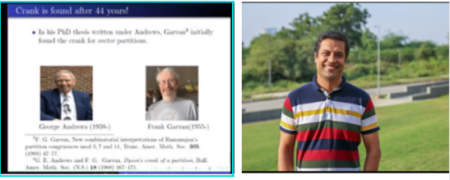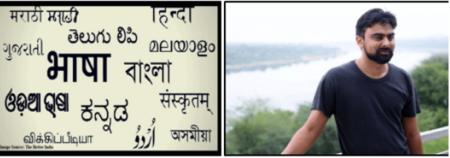
“Online learning is not the next big thing, it is the NOW big thing.” – Donna J. Abernathy
Hello and Namaste! How have you guys been? I hope you all are healthy and safe. I am back, yet again, with the third installment of the Virtual Seminar Series, an e-learning initiative by IIT Gandhinagar that focuses on imparting interesting and quality education to people on a wide variety of domains and fields. (Please visit parts I and II for the other captivating reads of this series.)
Without further ado, let’s begin our small adventure into the land of online education!
Visiting Partitions
Atul Dixit, a faculty in the discipline of mathematics, gave us a sneak-peek into the wondrous world of partitions. The concept of partitioning involves splitting math-problems with large numbers into smaller parts. This domain was initiated by Euler, and later eminent minds like J. J. Sylvester, G. H. Hardy, and S. Ramanujan made great contributions to develop it further. Moreover, several of these advances made by Ramanujan opened doors for some of the latest fields of mathematical research.
Prof Dixit progressed to discuss the tale of rank and crank. Introduced by Freeman John Dyson, the number obtained by subtracting the number of parts from the largest part is called the rank of a partition. Dyson, then, talked about the crank of a partition. According to him, it was a statistic that would combinatorially interpret the third congruence and yield a proper explanation of all three Ramanujan’s partition congruences. It was one of the first examples where a mathematical function was named before and defined later! Actually, this hypothetical concept was realized 44 years later by Frank Garvan and George Andrews. Interesting, isn’t it?
Partitions form an integral part, of not just math but also many of its allied areas as well. These have diverse applications viz., nonparametric statistics, probability and statistics, particle physics, computer science, and group theory through Young Tableaux (describes group representations and studies the properties of symmetric and general linear groups). Basic hypergeometric series, modular forms, and mock modular forms are some more areas where partitions are applicable. Long story short, partitions have connections with several branches of mathematics and science!
Exploring the Languages and Scripts of India
Did you know that according to Ethnologue, India has about 461 languages and The People’s Linguistic Survey of India says that the people of India speak about 781 languages? Similarly, some estimates depict that our country has around 88 scripts! Nishaant Choksi, a faculty in the discipline of Humanities and Social Sciences, delivered a captivating online lecture highlighting the different languages and scripts of India that make it the fourth largest linguistically diverse nation and one of the most graphically diverse lands in the world.
Linguists group languages into families on the basis of historical reconstructions and connections by means of comparisons among the words and sounds of different languages. According to this classification, India has four significant language families – Indo-European, Dravidian, Austro-Asiatic (Munda), and Tibeto-Burman. Prof Choksi also explained what languages are a part of these families and in which parts of the country they are prevalent. Apart from this, there are several languages that don’t fit into any of these family-categories. In terms of scripts, there are many countries in the world that use only one, two, or very few of them to write their languages. But India is different – the people here write in multiple scripts.
India has 22 national languages. Article 343 of the Indian Constitution states that the official language of the Union is Hindi (Devanagari script). However, its second part says that English shall continue to be utilized for all the official purposes of the Union for 15 years from the commencement of the Constitution. But, even today we observe that Hindi is not able to replace English. Why so? Because the imposition of Hindi caused riots and deaths in several parts of the country, and hence, English is still considered as the official language for India. This English language has become Indian over the span of all these years. It was and still is being greatly influenced by the multilingual nature of the people of this country. Similarly, many other countries have their own versions of English. This is how English has localized all over the world – by blending in with the languages of different nations.
An extremely important event in history was the split of the Hindustani language into two, based on the difference in the scripts, during the Colonial period. The one in Devanagari was later called Hindi and the other in Persio-Arabic was known as Urdu. During the partition of British India, Hindi was the proposed official language of India and Urdu of Pakistan. From all this, we can clearly see that languages have been intricately linked with the foundations of India and have been a part of its politics, territory, and social identity. Take-home lesson? Knowledge about the different languages and scripts of any nation can provide a proper understanding of its past, present, and future.
So, people, I hope that you found this article interesting and informative. I will be back soon with stories of the other lectures from this series. Till then, you know the survival drill – please wash your hands with soap and water frequently. Use an alcohol-based sanitizer if soap and water are not available. Practice social (physical) distancing and wear masks wherever necessary. Stay healthy, stay safe, and stay connected (virtually)!


